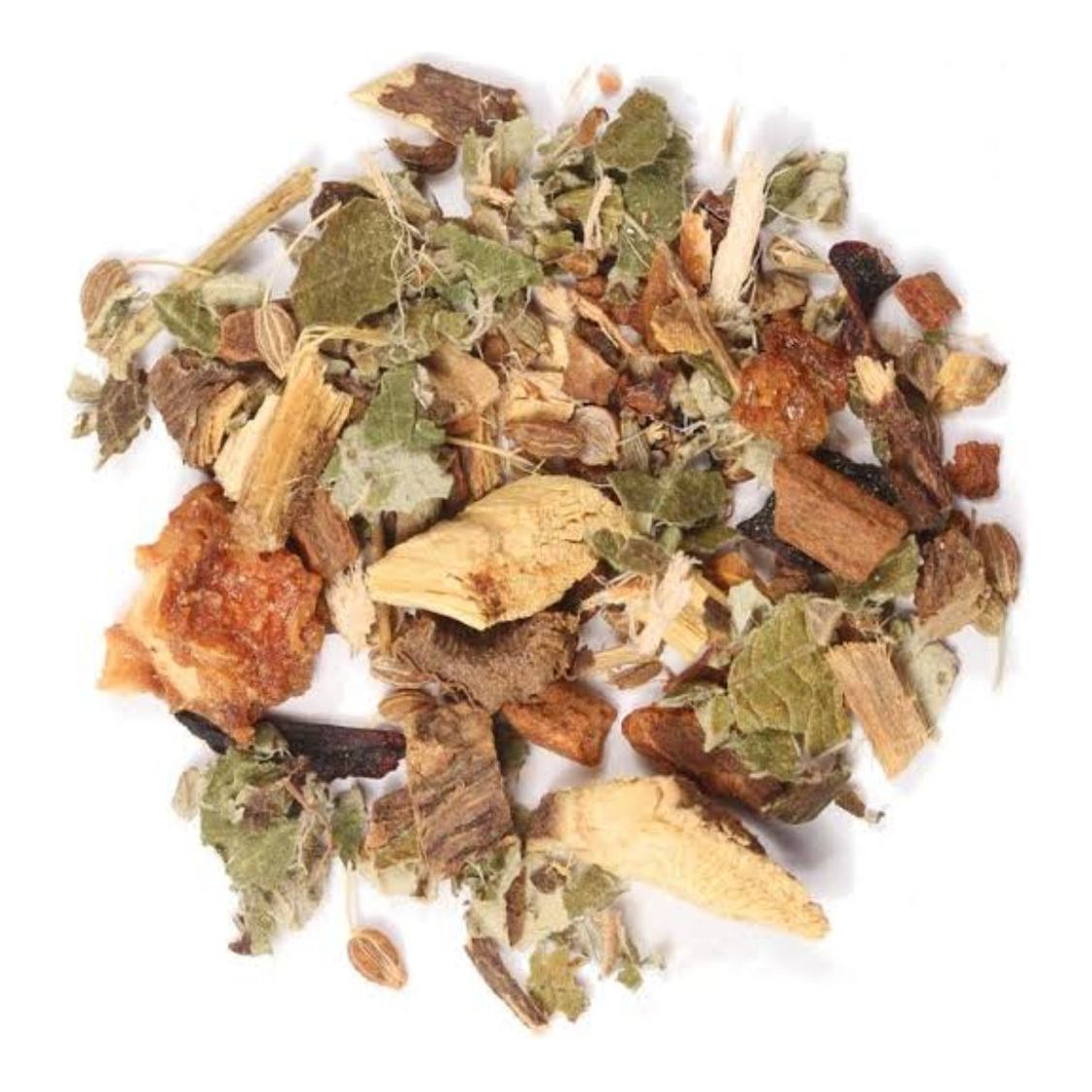THROAT TERAPHY. fuctional
THROAT TERAPHY. fuctional
Couldn't load pickup availability
WARNING: Be sure to talk with your doctor or healthcare provider before use, especially if you are pregnant or nursing, taking any medication, or if you have a medical condition. This product is not intended to diagnose, treat, cure, or prevent any disease. Intended for adult use only.
Blended With Licorice, Raspberry Leaves, Hibiscus, Orange, Cinnamon, Aniseed & Slippery Elm
Licorice is a plant from the bean family most used for its root. The root, which is up to fifty times sweeter than sugar, can be chewed on by itself as a treat or used to flavor various types of licorice candies. In the United States, sweet red and black licorices are the most common, though there are other varieties that are popular in Europe, including salty black licorice. Anise, which has a similar flavor to licorice, is also commonly used in licorice candy, though the two plants are unrelated.Know Your Inclusions
LICORICE ROOT
Used in traditional Chinese and Ayurvedic medicine for centuries, licorice is the root of Glycyrrhiza glabra from which a sweet flavor can be extracted.
It's uses include soothing stomach issues such as food poisoning, stomach ulcers and heartburn. It is also prized for the anti-inflammatory and immune-boosting properties derived from its glycyrrhiza acid.

RASPBERRY LEAVES
The most notable benefits of raspberry leaf is closely tied with women's health. In fact, it is often referred to as the woman's herb. It is thought to help ease menstrual discomfort, regulate hormones, stimulate milk production and even decrease labor pains. Additionally the leaves contain moderate levels of calcium, potassium, iron, manganese, magnesium and vitamins B,C, and E. They also are known to contain polyphenols and flavonoids, which act as antioxidants in the body.

HIBISCUS
Commonly used to make tea throughout the world, hibiscus flowers are believed to have a range of health benefits. Research has uncovered a link to its ability to lower blood pressure, fight bacteria and even aid in weight loss.

CINNAMON
Cinnamon (Dalchini) is a herb traditionally used by many ancient cultures. It is indicated for a variety of ailments including gastrointestinal problems, urinary infections, relieving symptoms of colds and flu and has remarkable anti-fungal and anti-bacterial properties.
Some studies have shown that Cinnamon helps people with diabetes metabolize sugar better.

ANISEED
The greenish seeds of the Pimpinella anisum have been a sought-after commodity throughout history.
Aniseed is an excellent source of iron, manganese, magnesium, calcium, zinc, potassium and copper. These minerals are essential to cardiac, bone and blood health.
The seeds have also been used to improve digestion and reduce nausea and aid in insomnia.

SLIPPERY ELM
Native to North America, Slippery Elm or Ulmus rubra, is a traditional herbal remedy that has been used by Native American for centuries.
The active ingredient in slipper elm is called mucilage, which has the ability to coat and sooth the mouth, throat, stomach and intestines. Because of this it has been used to relieve symptoms from IBS and other gastrointestinal ailments.

Share


